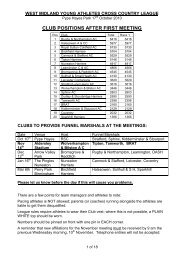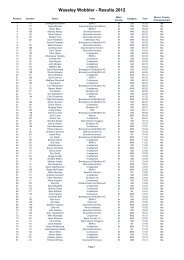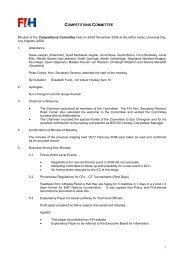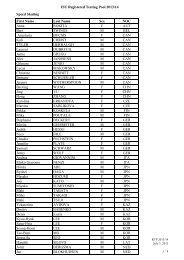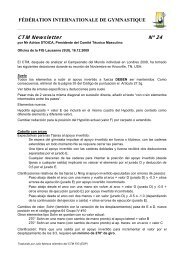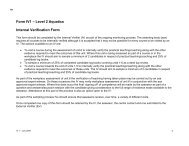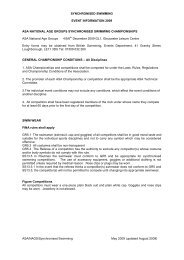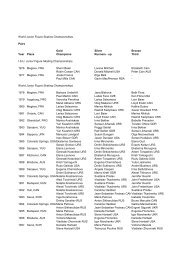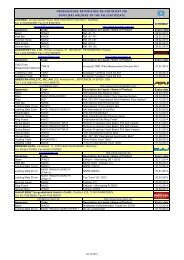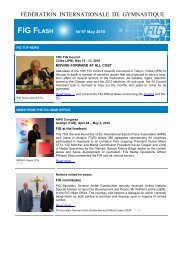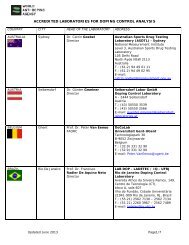ASA/UKCC Level 2 Certificate for Coaching Diving - FIG
ASA/UKCC Level 2 Certificate for Coaching Diving - FIG
ASA/UKCC Level 2 Certificate for Coaching Diving - FIG
Create successful ePaper yourself
Turn your PDF publications into a flip-book with our unique Google optimized e-Paper software.
Unit 3 – Sport Science - (Core to all <strong>Level</strong> 2 qualifications)Overview of Unit 3This unit is mandatoryThis is a core unit and links across all four coaching strands (Aquatic Teaching, <strong>Diving</strong>, Swimming<strong>Coaching</strong>, Synchronised Swimming, Water Polo). This unit develops the <strong>Level</strong> 2 Teachers/Coachsknowledge relating to exercise physiology, teaching/coaching psychology and training principles.AssessmentAll elements within Unit 3 will be assessed through ongoing coursework tasks i.e., via practicalobservation, oral questioning and/or written evidence produced as part of the learning programme.Element 1 - Exercise Physiology and Principles of TrainingTo achieve this element the candidate must be able to:U3.1.1 Identify the major components that make up the nervous system and describe the functionsof each component relating to movementU3.1.2 Identify the major muscle groups and describe the structure, properties and function ofskeletal muscleU3.1.3 Identify the major bones of the skeletal system (skeleton) and describe the development,properties and function of the skeletal systemU3.1.4 Identify the components of the respiratory system and describe its functionU3.1.5 Identify the components of the cardiovascular system and describe its functionU3.1.6 List and describe the principles of trainingU3.1.7 Identify the main energy systems and their functional characteristicsU3.1.8 List the essential components of nutrition <strong>for</strong> the human bodyU3.1.9 Identify the guidelines and methods <strong>for</strong> hydration and symptoms <strong>for</strong> dehydration of thehuman bodySyllabus:• Nervous System: brain, spinal cord, nerves, nerve impulses, fatigue• Muscular System: major muscle groups, origins and insertions muscle pairings, muscularcontraction, responses and adaptations to exercise (muscle fibre types size)• Skeletal System: major bones, types of bones, bone structure, joints (joint types, synovialmembrane/fluids, articular cartilage) response and adaptations to exercise• Respiratory System: anatomy e.g.- lungs, nose, mouth, mechanisms of breathing, structureand function, response and adaptations to exercise the transfer of oxygen and carbon dioxide[gaseous exchange],• Cardiovascular System: anatomy e.g. – heart and blood vessels, structure and function,transport of oxygen to and carbon dioxide from muscles; response and adaptations toexercise, resting and maximum heart rate• Energy Systems: anaerobic (alactic system), anaerobic (lactic acid system), aerobic (lacticacid, lactate threshold, speed, endurance)• Types of Training: strength, speed, power, endurance, flexibility• Principles of Training: specificity, stress, overload, adaptation, progression, reversibility• Nutrition: carbohydrates, fats, proteins, vitamins and minerals, energy supply <strong>for</strong> the provisionof exercise, food pyramid• Hydration: methods, guidelines, symptoms and effects of de-hydration, testingPage 8



